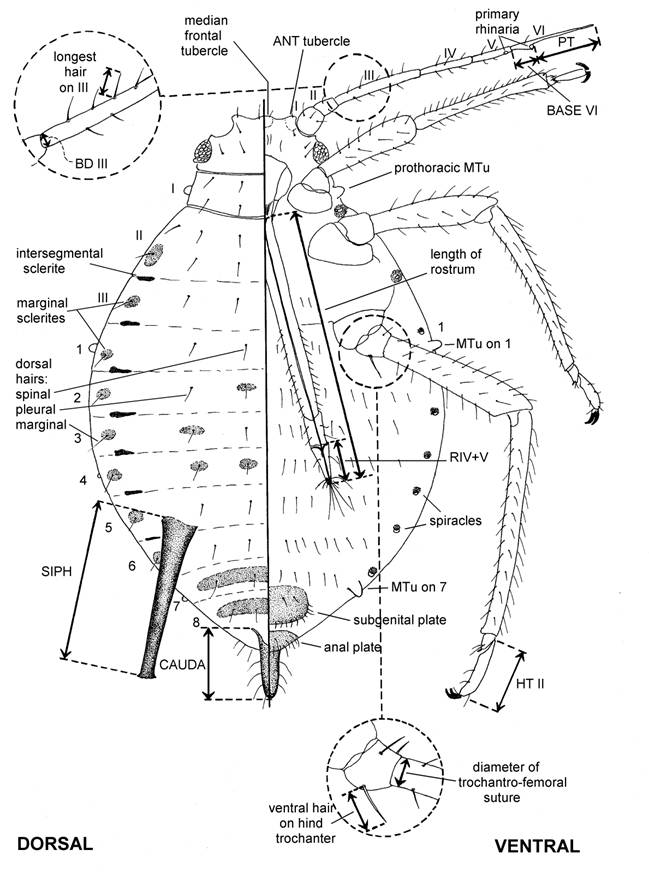
Fig. 1. Diagrammatic illustration of an apterous vivipara of a member of the tribe Aphidini showing dorsal (L) and ventral (R) morphological features used in the keys in this book, the abbreviations used, and ways to measure certain morphometric parameters. Antennal (ANT) and thoracic segments are numbered I-VI and I-III respectively, ANT III onwards being the ANT flagellum, and ANT VI comprising BASE and processus terminalis (PT). The ratio of ANT VI BASE to PT (ANT PT/BASE) is a frequently used discriminant. Abdominal segments are numbered 1-8. Insets show measurements of ANT and trochantral hairs, basal diameter of ANT III (BD III) and diameter of trochantro-femoral suture. The last two segments of the rostrum usually form a combined structure (R IV+V), the length of which is often compared with that of the 2nd segment of the hind tarsus (HT II). Members of the tribe Aphidini typically have marginal tubercles (MTu) on the prothorax and abdominal tergites (ABD TERG) 1 and 7, but some have them also on other segments.